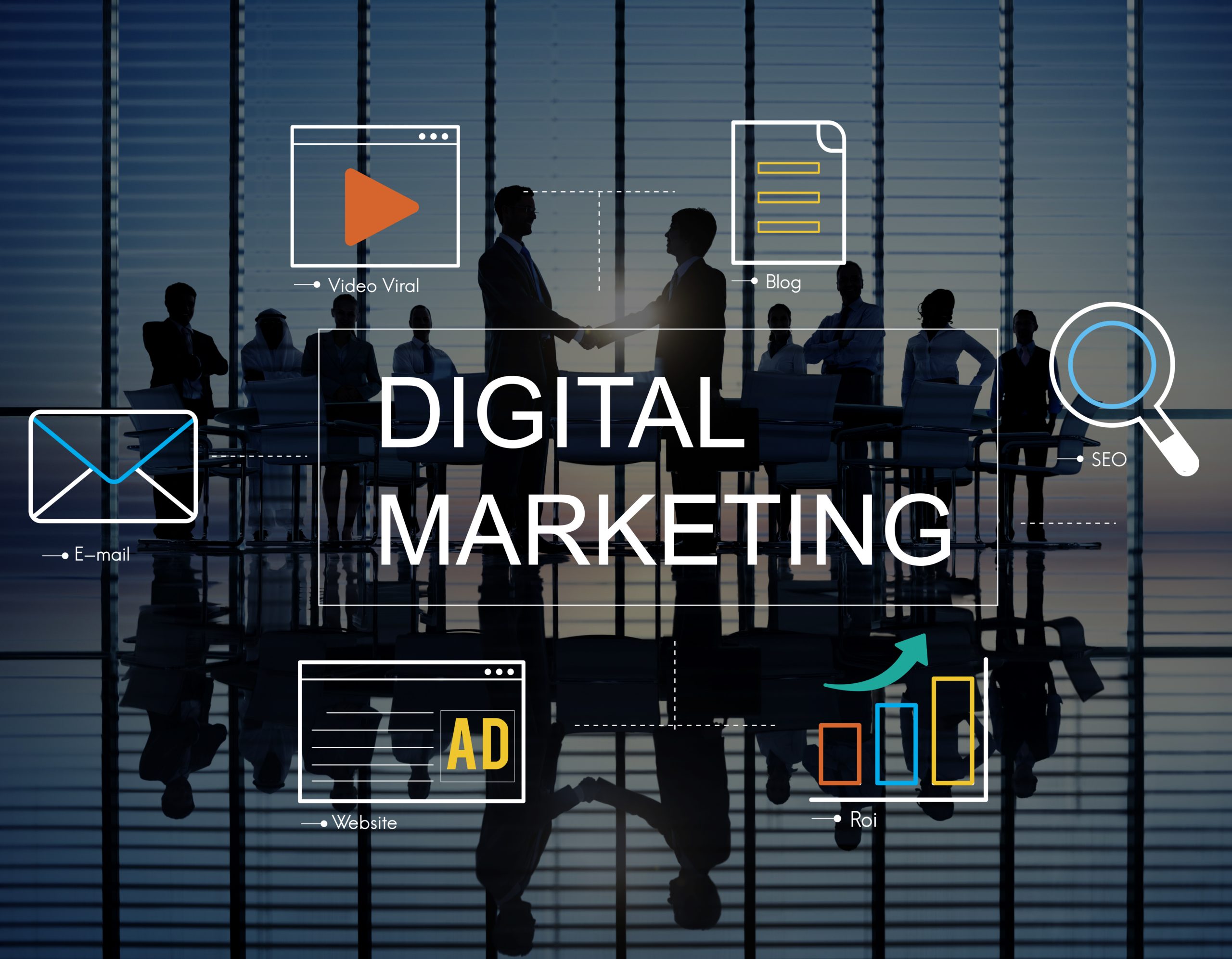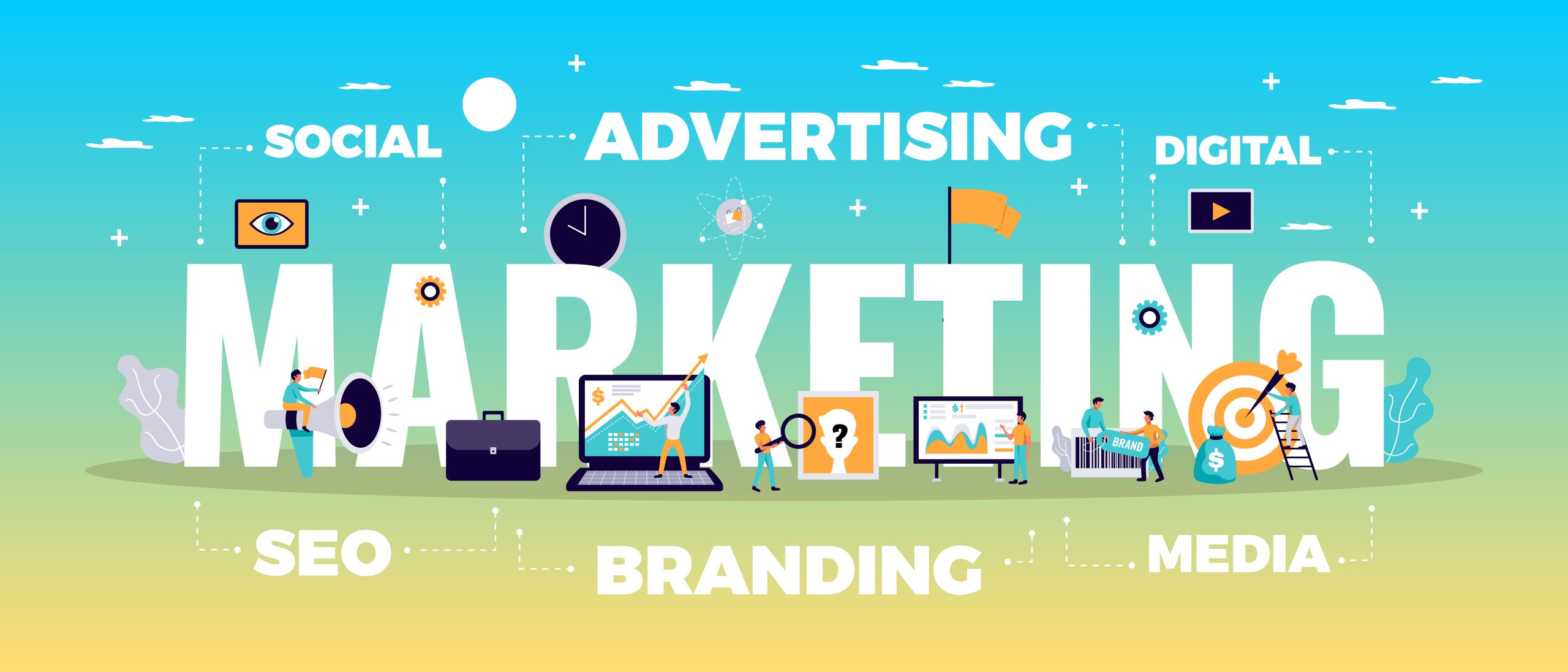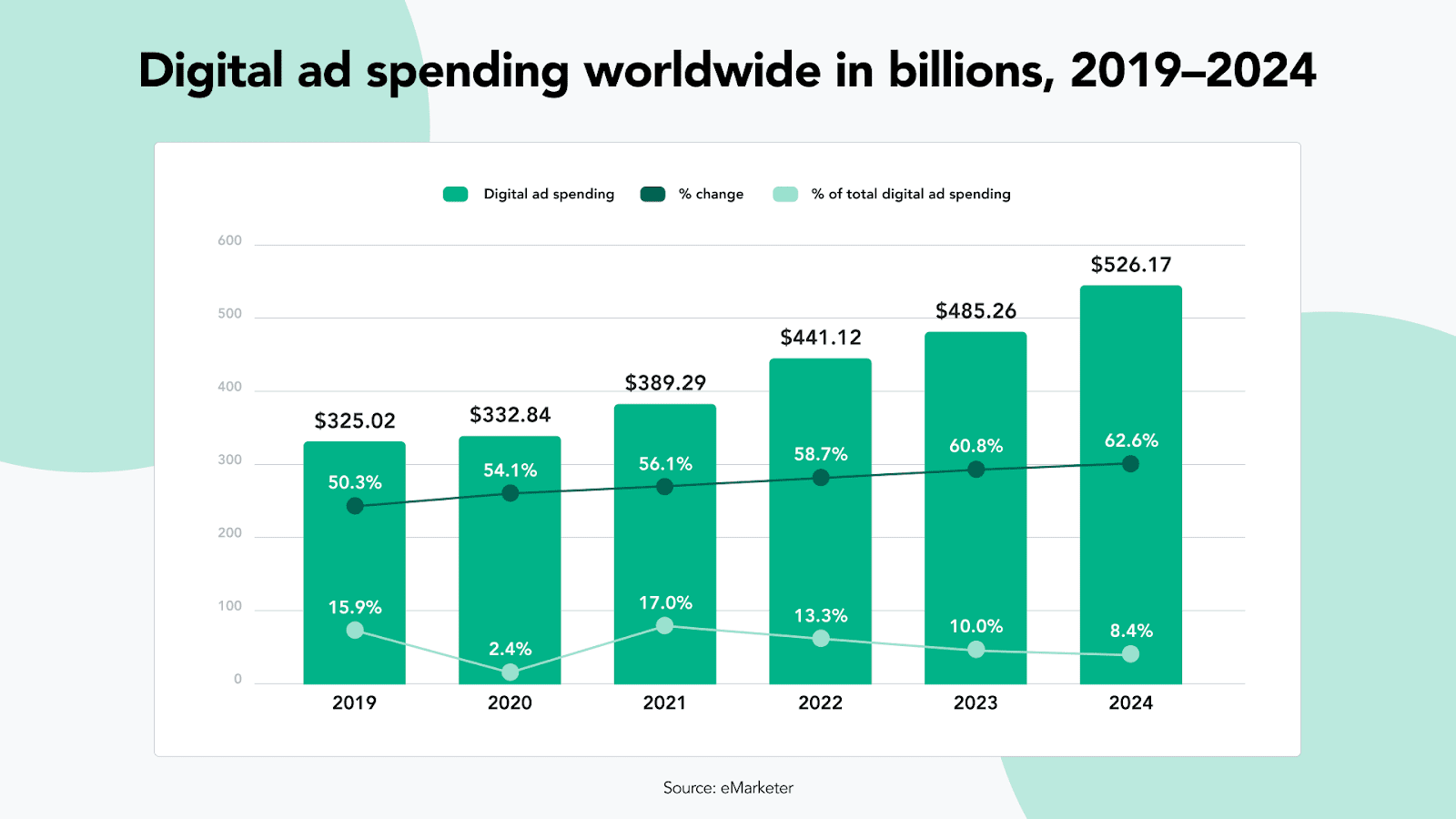
In today’s digital age, having a robust marketing strategy is essential for any business aiming to stay ahead of the competition. And when it comes to reaching and engaging with customers, an omni-channel approach is the key to unlocking success.
An omni-channel digital marketing strategy involves seamlessly integrating all the channels and touchpoints that your target audience interacts with, ensuring a consistent and personalized brand experience. From social media platforms and websites to email marketing and mobile apps, an omni-channel strategy allows businesses to meet customers wherever they are, providing a seamless experience across all devices.
But what are the essential components to consider when crafting an effective omni-channel digital marketing strategy? From creating a cohesive brand voice that resonates with your audience to optimizing your website for search engine visibility, this article explores the key elements that will help you unlock success with your omni-channel efforts. By implementing these components strategically, you’ll be able to attract, engage, and convert customers across various channels, taking your digital marketing strategy to new heights of success.
Understanding omni-channel digital marketing
In today’s fast-paced digital landscape, businesses are constantly striving to stay ahead of the competition. To achieve this, it is crucial to have a robust marketing strategy that effectively reaches and engages with customers. One approach that has proven to be highly successful is an omni-channel digital marketing strategy. But what exactly does this term mean?
An omni-channel digital marketing strategy involves seamlessly integrating all the channels and touchpoints that your target audience interacts with. This could include social media platforms, websites, email marketing, mobile apps, and more. The goal is to provide a consistent and personalized brand experience, regardless of the channel or device your customers are using. By meeting your customers wherever they are, you can create a seamless experience that drives engagement and conversions.
The importance of an omni-channel approach
So why is an omni-channel approach so important in today’s digital landscape? The answer lies in the way consumers interact with brands. Gone are the days when customers would only engage with a company through a single channel. Nowadays, consumers expect a seamless experience across all touchpoints. They want to have the freedom to switch between devices and channels without losing the context of their interactions.
By adopting an omni-channel approach, you can ensure that your customers have a consistent experience throughout their journey with your brand. This not only increases customer satisfaction and loyalty but also drives higher engagement and conversions. In fact, a study by Deloitte found that businesses with strong omni-channel strategies retain an average of 89% of their customers, compared to just 33% for those with weak strategies.
Key components of an omni-channel digital marketing strategy
Now that we understand the importance of an omni-channel approach, let’s explore the key components that make up a successful omni-channel digital marketing strategy. By implementing these components strategically, you can unlock the full potential of your digital marketing efforts and take your business to new heights of success.
1. Creating a Cohesive Brand Message Across Channels
One of the first steps in crafting an effective omni-channel strategy is creating a cohesive brand message that resonates with your target audience. Your brand message should be consistent across all channels, reflecting your core values, unique selling proposition, and brand personality. This ensures that customers have a clear understanding of your brand, regardless of the channel they are using.
To create a cohesive brand message, start by defining your brand’s mission, vision, and values. This will serve as the foundation for all your marketing efforts. Next, develop a brand voice that aligns with your target audience and reflects your brand’s personality. Whether you choose to be informative, witty, or professional, it is important to maintain a consistent tone across all channels.
Lastly, ensure that your brand visuals, such as your logo, colors, and imagery, are consistent across all touchpoints. This helps to reinforce your brand identity and makes it easier for customers to recognize and connect with your brand.
2. Integrating Online and Offline Marketing Efforts
In today’s digital age, it is easy to focus solely on online marketing channels and neglect the power of offline marketing. However, integrating your online and offline efforts is crucial for a successful omni-channel strategy. By combining the strengths of both digital and traditional marketing, you can create a more holistic brand experience for your customers.
Start by identifying the offline touchpoints where your target audience interacts with your brand. This could include physical stores, events, print advertisements, or even direct mail campaigns. Once you have identified these touchpoints, find ways to integrate them with your online channels.
For example, you can encourage customers to visit your website or social media platforms through offline promotions. Alternatively, you can use QR codes or personalized URLs on your print materials to drive customers to specific landing pages or offers. By integrating your online and offline efforts, you can create a seamless experience that bridges the gap between the physical and digital worlds.
3. Utilizing Data and Analytics for Personalized Marketing
One of the greatest advantages of an omni-channel strategy is the ability to collect and analyze customer data from various touchpoints. By leveraging this data, you can create highly targeted and personalized marketing campaigns that resonate with your audience.
Start by implementing a robust analytics system that tracks customer interactions across all channels. This will allow you to gather valuable insights into customer behavior, preferences, and purchase patterns. With this data, you can segment your audience and create personalized marketing messages that speak directly to their needs and interests.
For example, if a customer has recently browsed a specific product on your website, you can send them a personalized email with a special offer or recommendation related to that product. By delivering relevant and timely messages, you can greatly increase the chances of conversion and build stronger relationships with your customers.
4. Implementing a Seamless Customer Journey
Another essential component of an omni-channel strategy is creating a seamless customer journey. This involves mapping out the various touchpoints and interactions a customer has with your brand, and ensuring a smooth transition between them.
Start by identifying the key stages of your customer journey, from initial awareness to post-purchase support. Then, map out the touchpoints and channels that customers may encounter at each stage. This could include social media ads, search engine results, product pages, customer reviews, and more.
Next, optimize each touchpoint to provide a consistent and seamless experience. This could involve improving website navigation, streamlining checkout processes, or integrating customer support across channels. The goal is to make it as easy as possible for customers to move between touchpoints, without losing any context or encountering any obstacles.
By implementing a seamless customer journey, you can enhance the overall customer experience and drive higher engagement and conversions. Customers will appreciate the convenience and consistency of your brand, leading to increased loyalty and advocacy.
5. Tools and Technologies for Omni-channel Marketing
To effectively implement an omni-channel strategy, it is important to leverage the right tools and technologies. These tools can help you automate processes, analyze data, and deliver personalized messages at scale.
Start by investing in a robust customer relationship management (CRM) system that integrates with your various marketing channels. This will allow you to centralize customer data and track interactions across channels, providing a 360-degree view of each customer.
Additionally, consider implementing marketing automation software to streamline your omni-channel campaigns. This software can help you schedule and automate marketing messages, track customer responses, and measure campaign performance.
Lastly, don’t forget about the power of social listening tools. These tools allow you to monitor conversations and mentions of your brand across social media platforms, helping you to understand customer sentiment and identify opportunities for engagement.
By leveraging these tools and technologies, you can streamline your omni-channel marketing efforts and maximize efficiency and effectiveness.
6. Measuring the Success of Your Omni-channel Strategy
As with any marketing strategy, it is important to measure the success of your omni-channel efforts. This will help you identify areas of improvement, optimize your campaigns, and justify your marketing investments.
Start by defining key performance indicators (KPIs) that align with your business goals. These could include metrics such as website traffic, click-through rates, conversion rates, customer lifetime value, and customer satisfaction scores.
Next, implement tracking mechanisms across all your marketing channels to gather data on these KPIs. This could involve setting up conversion tracking on your website, using UTM parameters in your URLs, or implementing event tracking on your mobile app.
Once you have collected data, analyze it regularly to identify trends and patterns. Look for areas of improvement and test different strategies to optimize your campaigns. By continuously monitoring and optimizing, you can ensure that your omni-channel strategy is delivering the desired results.
Creating a cohesive brand message across channels
A cohesive brand message is the foundation of any successful marketing strategy. It is what sets your business apart from the competition and resonates with your target audience. When it comes to an omni-channel approach, consistency is key. Your brand message should be consistent across all channels, ensuring that customers have a unified experience regardless of where they interact with your brand.
To create a cohesive brand message, start by defining your brand’s core values and mission. What do you stand for? What problem do you solve for your customers? Once you have a clear understanding of your brand’s identity, develop a brand voice that reflects these values and resonates with your target audience. Whether it’s a witty and humorous tone or a professional and authoritative voice, make sure your brand voice is consistent across all channels.
Next, ensure that your visual identity is consistent as well. This includes your logo, color palette, typography, and imagery. Consistency in visual elements builds brand recognition and helps customers associate your brand with a particular look and feel. Additionally, consider the messaging and content you share across channels. While the format may vary, the core message should remain consistent to maintain a cohesive brand image.
By creating a cohesive brand message that is consistent across channels, you’ll establish a strong brand identity, build trust with your audience, and ensure a seamless experience for your customers.
Integrating online and offline marketing efforts
In today’s digital world, it’s easy to focus solely on online marketing efforts. However, integrating online and offline marketing initiatives can significantly enhance the effectiveness of your omni-channel strategy. By connecting the dots between your online and offline channels, you’ll create a cohesive and holistic brand experience for your customers.
One way to integrate online and offline marketing is by using QR codes in your offline advertisements or printed materials. These codes can be scanned by customers using their smartphones, directing them to a specific landing page or offer on your website. This not only drives traffic to your online channels but also provides a seamless transition for customers from offline to online.
Another effective way to integrate online and offline marketing is by using location-based targeting. By leveraging geolocation technology, you can send targeted messages or offers to customers when they are near your physical store or within a specific area. This helps bridge the gap between online and offline, providing a personalized experience for customers based on their location.
Additionally, consider hosting offline events or workshops that are promoted through your online channels. This not only generates buzz and engagement online but also allows you to connect with your audience in person. Encourage attendees to share their experience on social media, further amplifying your brand’s reach and engagement.
By integrating online and offline marketing efforts, you’ll create a seamless brand experience that bridges the gap between digital and physical touchpoints, ultimately leading to increased brand visibility and customer engagement.
Utilizing data and analytics for personalized marketing
One of the key advantages of an omni-channel digital marketing strategy is the ability to gather and analyze data from various channels. By utilizing data and analytics, you can gain valuable insights into customer behavior, preferences, and purchase patterns, allowing you to create personalized marketing campaigns that resonate with your audience.
Start by implementing tracking and analytics tools across all your digital channels. This includes website analytics, email marketing analytics, social media analytics, and any other platform you use to interact with your audience. These tools will provide you with data on customer demographics, engagement levels, click-through rates, and conversion rates.
Once you have access to this data, dive deep into the numbers to identify patterns and trends. Look for commonalities among your high-converting customers, such as demographics, interests, or behaviors. Use this information to create customer personas that represent your target audience segments. These personas will help you tailor your marketing messages and campaigns to specific customer groups, increasing the likelihood of engagement and conversion.
Another way to utilize data and analytics for personalized marketing is through email marketing automation. By segmenting your email list based on customer data, you can send targeted and personalized emails that speak directly to the recipient’s interests or past purchase history. This level of personalization not only increases open and click-through rates but also improves customer satisfaction and loyalty.
In addition to data gathered from your own channels, consider leveraging third-party data sources for a more comprehensive view of your audience. This can include demographic data, purchasing behavior data, or even social media listening tools that provide insights into customer sentiment and preferences.
By utilizing data and analytics, you’ll be able to create personalized marketing campaigns that resonate with your audience, increase engagement and conversion rates, and ultimately drive business growth.
Implementing a seamless customer journey
A seamless customer journey is crucial for the success of an omni-channel digital marketing strategy. It ensures that customers have a consistent and frictionless experience as they move from one channel to another, ultimately leading to higher customer satisfaction and increased conversion rates.
To implement a seamless customer journey, start by mapping out the various touchpoints and interactions that a customer may have with your brand. This can include browsing your website, engaging with your social media posts, receiving email newsletters, or visiting your physical store. Identify any potential gaps or inconsistencies in the customer journey and work towards bridging them.
One way to create a seamless customer journey is by ensuring that your website is mobile-friendly and responsive. With the increasing use of smartphones and mobile devices, it’s essential to provide a smooth and optimized experience for customers on the go. Optimize your website’s load time, navigation, and content layout to ensure a seamless browsing experience across all devices.
Additionally, consider implementing a customer relationship management (CRM) system to track and manage customer interactions across channels. This allows you to have a complete view of each customer’s journey, ensuring that they receive consistent and relevant messaging throughout their interaction with your brand.
Another important aspect of a seamless customer journey is the integration of customer support across channels. Whether it’s through live chat on your website, social media messaging, or a dedicated customer service hotline, ensure that customers can easily reach out for assistance regardless of the channel they are using. This level of support builds trust and enhances the overall customer experience.
By implementing a seamless customer journey, you’ll provide a consistent and frictionless experience for customers, increasing their satisfaction and loyalty to your brand.
Tools and technologies for omni-channel marketing
The success of an omni-channel digital marketing strategy relies heavily on the tools and technologies used to execute and manage campaigns across various channels. These tools not only streamline the process but also enhance the effectiveness of your efforts. Here are some essential tools and technologies to consider:
1. Marketing Automation Platforms: These platforms allow you to automate and manage marketing campaigns across multiple channels, ensuring consistent messaging and timing. They often include features such as email marketing, social media management, and customer relationship management.
2. Customer Data Platforms (CDPs): CDPs centralize customer data from various sources, providing a comprehensive view of each customer’s interactions with your brand. This data can then be used to segment customers, personalize marketing campaigns, and track customer journeys.
3. Content Management Systems (CMS): A CMS allows you to create, manage, and publish content across different channels, ensuring consistent branding and messaging. It simplifies the process of updating and maintaining your website, blog, and other content platforms.
4. Social Media Management Tools: These tools help you schedule and publish social media content, monitor engagement, and analyze performance. They enable you to maintain an active presence on social media while providing insights into audience behavior and preferences.
5. Analytics and Reporting Tools: Analytics tools provide valuable insights into the performance of your marketing efforts across channels. They help you track key metrics, measure ROI, and make data-driven decisions to optimize your campaigns.
6. Personalization Engines: Personalization engines use algorithms and machine learning to deliver personalized content and recommendations to customers based on their preferences and past behavior. They enhance the customer experience by providing relevant and tailored messaging.
By leveraging these tools and technologies, you’ll be able to streamline your omni-channel marketing efforts, enhance customer engagement, and drive results.
Measuring the success of your omni-channel strategy
Measuring the success of your omni-channel strategy is crucial to understanding what’s working and what needs improvement. It allows you to make data-driven decisions and optimize your campaigns for better results. Here are some key metrics to consider when measuring the success of your omni-channel strategy:
1. Conversion Rate: This metric measures the percentage of visitors or leads that convert into customers. It helps you assess the effectiveness of your campaigns in driving actual sales or desired actions.
2. Customer Lifetime Value (CLV): CLV measures the total value a customer brings to your business over their lifetime. It helps you evaluate the long-term profitability of your customer base and identify opportunities for retention and upselling.
3. Customer Acquisition Cost (CAC): CAC measures the cost incurred to acquire a new customer. It helps you assess the efficiency and profitability of your marketing efforts and optimize your budget allocation.
4. Return on Investment (ROI): ROI measures the profitability of your marketing campaigns by comparing the cost of investment to the revenue generated. It helps you determine the effectiveness of your marketing efforts and identify areas for improvement.
5. Customer Satisfaction (CSAT): CSAT measures the level of satisfaction or happiness your customers have with your brand, products, or services. It helps you gauge the overall customer experience and identify areas for improvement.
6. Social Media Engagement: This metric measures the level of engagement and interaction your brand receives on social media platforms. It includes metrics such as likes, comments, shares, and mentions, indicating the level of brand awareness and customer engagement.
By regularly monitoring and analyzing these metrics, you’ll be able to measure the success of your omni-channel strategy, identify areas for improvement, and make data-driven decisions to optimize your marketing efforts.
Conclusion: Embracing the future of digital marketing
In conclusion, an omni-channel digital marketing strategy is essential for businesses aiming to unlock success in today’s digital age. By seamlessly integrating all the channels and touchpoints that your target audience interacts with, you can provide a consistent and personalized brand experience that drives engagement and conversions.
By focusing on creating a cohesive brand message, integrating online and offline efforts, utilizing data and analytics, implementing a seamless customer journey, leveraging the right tools and technologies, and measuring the success of your strategy, you can take your digital marketing efforts to new heights.
So, embrace the future of digital marketing and start crafting your omni-channel strategy today. By meeting your customers wherever they are, you can build stronger relationships, increase customer loyalty, and drive sustainable business growth.




